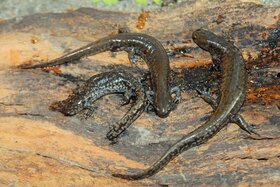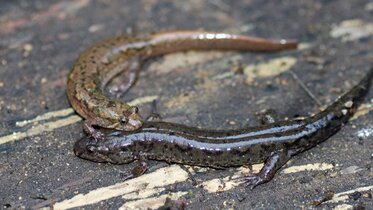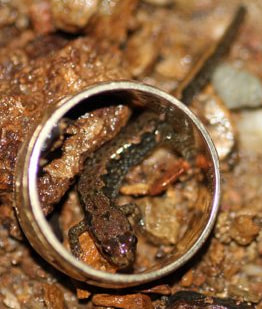SMALL-MOUTH SALAMANDER
Ambystoma texanum
These small salamanders are usually black or dark brown with light gray or silvery flecks or gray blotching. The belly is black with tiny flecks of gray. They have a small head in relation to the size of the body. The tail is long. Males are usually smaller than females.
Length: 4.5-7 inches.
They are presumed to be Statewide, but are more frequently encountered in the Northern portion of our state. They are found in a wide variety of habitats, including moist woodlands, rocky hillsides, agricultural areas, swamps, and tallgrass prairies.
Look for them in early spring after rainfall. They will often be encountered crossing roads near bodies of water like streams. Females may lay up to 800 eggs in her lifetime., usually in clusters up to 30. Eggs will be attached to rocks, sticks or other submerged surfaces. Typically they are found under logs, rocks or even hiding in crayfish and mole burrows.
Length: 4.5-7 inches.
They are presumed to be Statewide, but are more frequently encountered in the Northern portion of our state. They are found in a wide variety of habitats, including moist woodlands, rocky hillsides, agricultural areas, swamps, and tallgrass prairies.
Look for them in early spring after rainfall. They will often be encountered crossing roads near bodies of water like streams. Females may lay up to 800 eggs in her lifetime., usually in clusters up to 30. Eggs will be attached to rocks, sticks or other submerged surfaces. Typically they are found under logs, rocks or even hiding in crayfish and mole burrows.



